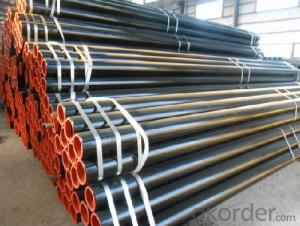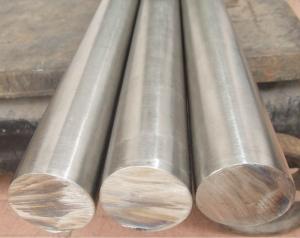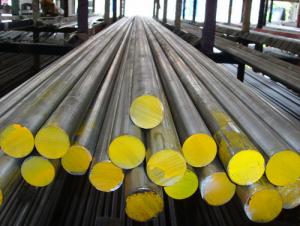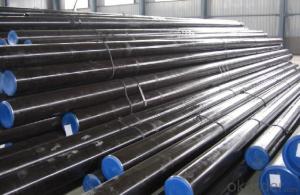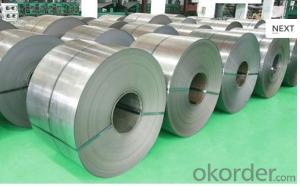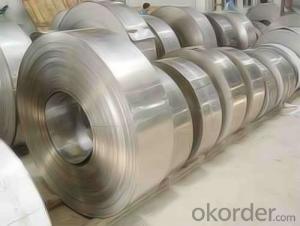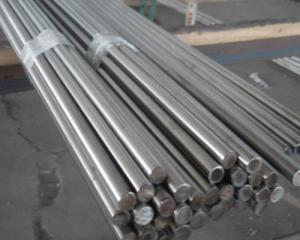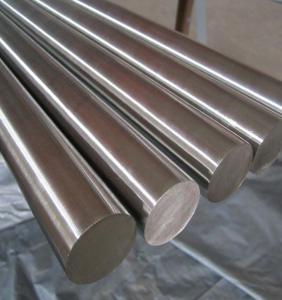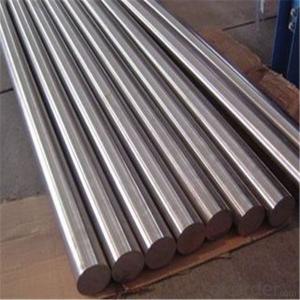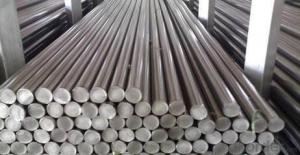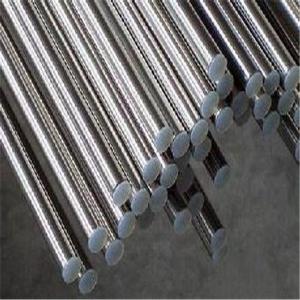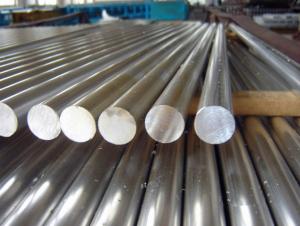Stainless Steel Seamless Steel Pipe Factory
- Loading Port:
- China Main Port
- Payment Terms:
- TT or LC
- Min Order Qty:
- 30 m.t.
- Supply Capability:
- 12000 m.t./month
OKorder Service Pledge
OKorder Financial Service
You Might Also Like
Specifications
1、Structure of Seamless Pipe ASTM A106/53:
Seamless pipe is formed by drawing a solid billet over a piercing rod to create the hollow shell. As the manufacturing process does not include any welding, seamless pipes are perceived to be stronger and more reliable. Historically seamless pipe was regarded as withstanding pressure better than other types, and was often more easily available than welded pipe.
Application
kitchen and sanitary wares , and Structural use high strength components,furniture
handles , handrails , electroplating and electrolyzing pendants , foods, electron ,
petroleum , construction and decoration , etc
Packing and shipment
Packaged in bundles,as per customers' requirements, it can also bepackagesd as beveled ends, typed marking, black painting, plastic caps protection,woven bags packing
For 20" container the max length is 5.8m; For 40" container the max length is 12m. other options are available based on customer requests. Please discuss when placing orders.
2、Main Features of the Seamless Pipe ASTM A106/53:
• High manufacturing accuracy
• High strength
• Small inertia resistance
• Strong heat dissipation ability
• Good visual effect
• Reasonable price
3、Seamless Pipe ASTM A106/53 Specification:
Standard | GB, DIN, ASTM ASTM A106-2006, ASTM A53-2007 |
Grade | 10#-45#, 16Mn 10#, 20#, 45#, 16Mn |
Thickness | 8 - 33 mm |
Section Shape | Round |
Outer Diameter | 133 - 219 mm |
Place of Origin | Shandong, China (Mainland) |
Secondary Or Not | Non-secondary |
Application | Hydraulic Pipe |
Technique | Cold Drawn |
Certification | API |
Surface Treatment | factory state or painted black |
Special Pipe | API Pipe |
Alloy Or Not | Non-alloy |
Length | 5-12M |
Outer Diameter | 21.3-610mm |
Grade | 20#, 45#, Q345, API J55, API K55, API L80, API N80, API P110, A53B |
Standard | ASME, ASTM |
1) Material:20#(ASTM A 106/A53 GRB.API5LGRB,GB),45#,16Mn,10#.
2) Specification range:OD:21.3-610mm,WT:6-70mm,length:6-12m or according to the requirement of clients.
3) Excutive standards:GB,ASME API5L.ASTM A 106/A53,Despite of the above standards,we can also supply seamless steel pipe with standard of DIN,JIS,and so on,and also develop new products according to the requirements of our clients!
4) Surface:black lacquered,varnish coating or galvanized.
5) Ends:Beveled or square cut,plastic capped,painted.
6) Packing:bundles wrapped with strong steel strip,seaworthy packing.
4、Packaging & Delivery
Packaging Details: | seaworthy package,bundles wrapped with strong steel strip |
Delivery Detail: | 15-30days after received 30%TT |
5、FAQ of Seamless Pipe ASTM A106/53:
①How is the quality of your products?
Our products are manufactured strictly according to national and internaional standard, and we take a test
on every pipe before delivered out. If you want see our quality certifications and all kinds of testing report, please just ask us for it.
Guaranteed: If products’ quality don’t accord to discription as we give or the promise before you place order, we promise 100% refund.
②How about price?
Yes, we are factory and be able to give you lowest price below market one, and we have a policy that “ for saving time and absolutely honest business attitude, we quote as lowest as possible for any customer, and discount can be given according to quantity”,if you like bargain and factory price is not low enough as you think, just don’t waste your time.Please trust the quotation we would give you, it is professional one.
③Why should you chose us?
Chose happens because of quality, then price, We can give you both.Additionally, we can also offer professional products inquiry, products knowledge train(for agents), smooth goods delivery, exellent customer solution proposals.Our service formula: good quality+good price+good service=customer’s trust
SGS test is available, customer inspection before shipping is welcome, third party inspection is no problem.
6、Seamless Pipe ASTM A106/53 Images:
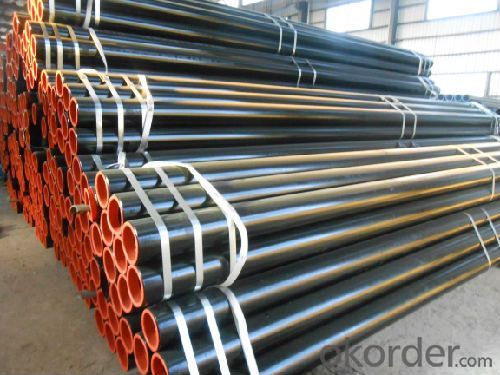
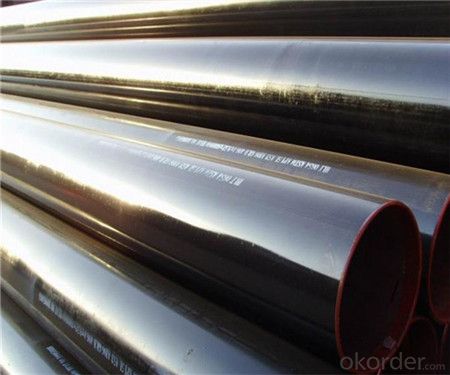
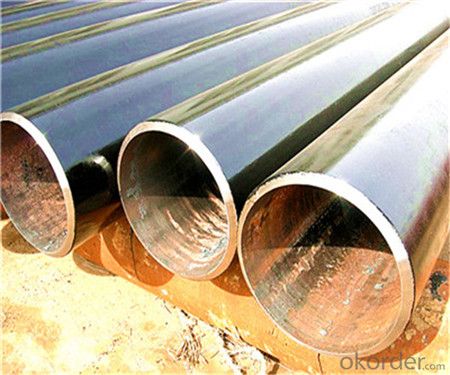
- Q:Are stainless steel bars available in different shapes?
- Yes, stainless steel bars are available in different shapes. Stainless steel bars can be found in various forms such as round bars, square bars, hexagonal bars, flat bars, and even hollow bars. Each shape serves different purposes and is used in various industries. Round bars are commonly used in construction and engineering projects, while square bars are often used for manufacturing and fabrication purposes. Hexagonal bars are mainly used in the automotive and aerospace industries, and flat bars are frequently employed in architectural applications. Hollow bars, on the other hand, are used when a lighter weight and increased strength are required. Overall, stainless steel bars are versatile and can be found in a wide range of shapes to suit different needs and applications.
- Q:Can stainless steel bars be threaded?
- Yes, stainless steel bars can be threaded.
- Q:What are the dimensional tolerances for stainless steel bars?
- The dimensional tolerances for stainless steel bars can vary depending on the specific grade and size of the bar. Generally, the dimensional tolerances for stainless steel bars are specified as per industry standards such as ASTM A276 or ASTM A484. For the diameter or size of the bar, the tolerance is typically specified as a plus or minus value. The tolerance can range from a few thousandths of an inch to a few hundredths of an inch, depending on the size and grade of the bar. For example, a 1-inch diameter stainless steel bar may have a tolerance of +/- 0.005 inches, while a 3/8-inch diameter bar may have a tolerance of +/- 0.002 inches. In addition to the diameter tolerance, other dimensional tolerances may also be specified for stainless steel bars. These can include straightness tolerance, which ensures that the bar does not have excessive bow or bend, and length tolerance, which specifies the allowable variation in the overall length of the bar. It is important to note that these tolerances are intended to ensure that the stainless steel bars meet the required dimensional specifications for their intended use. These tolerances may vary depending on the application and specific requirements of the customer. Therefore, it is always recommended to consult the relevant standards and specifications or discuss with the manufacturer or supplier to determine the exact dimensional tolerances for the specific stainless steel bars required.
- Q:Can stainless steel bars be used in food processing?
- Yes, stainless steel bars can be used in food processing. Stainless steel is a popular material choice in the food and beverage industry due to its many desirable properties. It is corrosion resistant, which means it can withstand exposure to moisture, acids, and other corrosive substances commonly found in food processing environments. Stainless steel also has a smooth and non-porous surface, making it easy to clean and maintain proper hygiene standards. Additionally, stainless steel is a strong and durable material that can withstand high temperatures and heavy loads, making it suitable for various food processing applications such as conveyor systems, storage tanks, and equipment frames. Overall, stainless steel bars are a reliable and safe choice for use in food processing.
- Q:What are the different types of stainless steel bar surface defects?
- There are several different types of surface defects that can occur on stainless steel bars. Some of the most common defects include: 1. Scratches: These are visible marks on the surface of the bar caused by contact with a sharp object or abrasive material. Scratches can vary in depth and severity, and may impact the aesthetic appeal of the bar. 2. Pitting: Pitting is the formation of small, localized craters or holes on the surface of the bar. This defect is typically caused by chemical reactions or exposure to corrosive environments. Pitting can lead to reduced mechanical strength and potential failure of the bar. 3. Stains: Surface stains can occur due to exposure to corrosive substances or improper cleaning methods. These stains can be discolored spots or patches that are difficult to remove and may affect the appearance of the bar. 4. Scale: Scale is a layer of oxide or other impurities that can form on the surface of stainless steel bars during the manufacturing process. This defect can be caused by improper heat treatment or inadequate cleaning procedures. Scale can reduce the corrosion resistance and mechanical properties of the bar. 5. Surface roughness: Stainless steel bars may exhibit uneven or rough surfaces due to improper finishing or handling. This defect can impact the functionality and aesthetic appeal of the bar, and may require additional processing to achieve the desired surface smoothness. 6. Surface contamination: Contaminants such as oil, grease, or dirt can adhere to the surface of stainless steel bars during handling, storage, or transportation. These contaminants can affect the corrosion resistance and cleanliness of the bar, and may require thorough cleaning to remove. It is important to note that these surface defects can vary in severity and impact on the performance of the stainless steel bar. Manufacturers and users should implement proper quality control measures to minimize the occurrence of these defects and ensure the desired surface quality of the bars.
- Q:Are stainless steel bars resistant to hydrogen-induced cracking?
- Yes, stainless steel bars are generally resistant to hydrogen-induced cracking due to their high resistance to corrosion and their ability to withstand exposure to hydrogen without undergoing embrittlement.
- Q:Can stainless steel bars be used in aerospace manufacturing?
- Certainly, aerospace manufacturing can incorporate stainless steel bars. Stainless steel, a highly versatile material, finds extensive utilization across various industries, aerospace included. Its exceptional blend of strength, durability, and resistance to corrosion renders it suitable for employment in crucial aircraft elements, including landing gear, engine components, fasteners, and structural parts. Stainless steel bars frequently feature in the production of structural frames, support structures, and other vital components demanding elevated strength and resilience to severe operational conditions. Moreover, stainless steel's capacity to endure high temperatures and exhibit outstanding performance in extreme environments positions it as an ideal selection for aerospace applications.
- Q:Can stainless steel bars be used in the electronics industry?
- Yes, stainless steel bars can be used in the electronics industry. Stainless steel is often used for components and fixtures in electronic devices due to its excellent corrosion resistance, high strength, and heat resistance. It can be used for manufacturing connectors, housings, brackets, and other parts that require durability and reliability in electronic applications.
- Q:Are stainless steel bars resistant to fatigue?
- Yes, stainless steel bars are generally resistant to fatigue. Fatigue refers to the weakening or failure of a material due to repeated or cyclic loading. Stainless steel, due to its unique composition and properties, exhibits excellent fatigue resistance compared to other metals. It has a high tensile strength and durability, allowing it to withstand repetitive stress without experiencing significant damage or failure. Additionally, stainless steel bars have a high resistance to corrosion, which further enhances their fatigue resistance. This means that even when exposed to harsh environments or corrosive substances, stainless steel bars maintain their structural integrity and fatigue resistance. Moreover, stainless steel can undergo various heat treatments and processing techniques, such as cold working or annealing, to further enhance its fatigue resistance. These treatments modify the microstructure of the steel, improving its ability to withstand cyclic loading and prevent fatigue failure. However, it is important to note that the fatigue resistance of stainless steel bars can vary depending on factors such as the specific alloy used, the manufacturing process, and the design of the component. Therefore, it is crucial to consider these factors and consult with experts or refer to relevant standards and specifications to ensure the appropriate selection and application of stainless steel bars for fatigue-prone applications.
- Q:What are the different packaging options for stainless steel bars?
- There are several different packaging options available for stainless steel bars. The choice of packaging depends on various factors such as the type and size of the bars, transportation requirements, and customer preferences. One common packaging option is bundle packaging, where stainless steel bars of similar sizes and lengths are bundled together using steel straps or wires. This packaging method provides stability and security during transportation and can be easily loaded and unloaded using cranes or forklifts. Bundle packaging is suitable for larger quantities of bars and ensures efficient handling and storage. Another packaging option is wooden crates or pallets. Stainless steel bars can be securely packed and stacked on wooden pallets or placed in wooden crates. This packaging method provides protection against damage during transportation and is commonly used for smaller quantities or special orders. It also allows for easy handling and can be customized according to specific customer requirements. Individual packaging is another option where each stainless steel bar is wrapped individually in protective materials such as plastic or paper. This packaging method ensures that each bar is protected from scratches or other damages and is often used for smaller bars or when the bars need to be stored for longer periods. In addition to these options, stainless steel bars can also be packaged in shrink-wrapped plastic or placed in steel drums or containers for international shipping. These packaging methods provide additional protection against moisture, corrosion, and other external factors. Ultimately, the choice of packaging option for stainless steel bars depends on the specific requirements of the customer, the size and quantity of the bars, and the transportation and storage conditions. Packaging options can be customized to meet individual needs and ensure the safe and secure delivery of stainless steel bars to their intended destination.
1. Manufacturer Overview |
|
|---|---|
| Location | |
| Year Established | |
| Annual Output Value | |
| Main Markets | |
| Company Certifications | |
2. Manufacturer Certificates |
|
|---|---|
| a) Certification Name | |
| Range | |
| Reference | |
| Validity Period | |
3. Manufacturer Capability |
|
|---|---|
| a)Trade Capacity | |
| Nearest Port | |
| Export Percentage | |
| No.of Employees in Trade Department | |
| Language Spoken: | |
| b)Factory Information | |
| Factory Size: | |
| No. of Production Lines | |
| Contract Manufacturing | |
| Product Price Range | |
Send your message to us
Stainless Steel Seamless Steel Pipe Factory
- Loading Port:
- China Main Port
- Payment Terms:
- TT or LC
- Min Order Qty:
- 30 m.t.
- Supply Capability:
- 12000 m.t./month
OKorder Service Pledge
OKorder Financial Service
Similar products
New products
Hot products
Hot Searches
Related keywords
